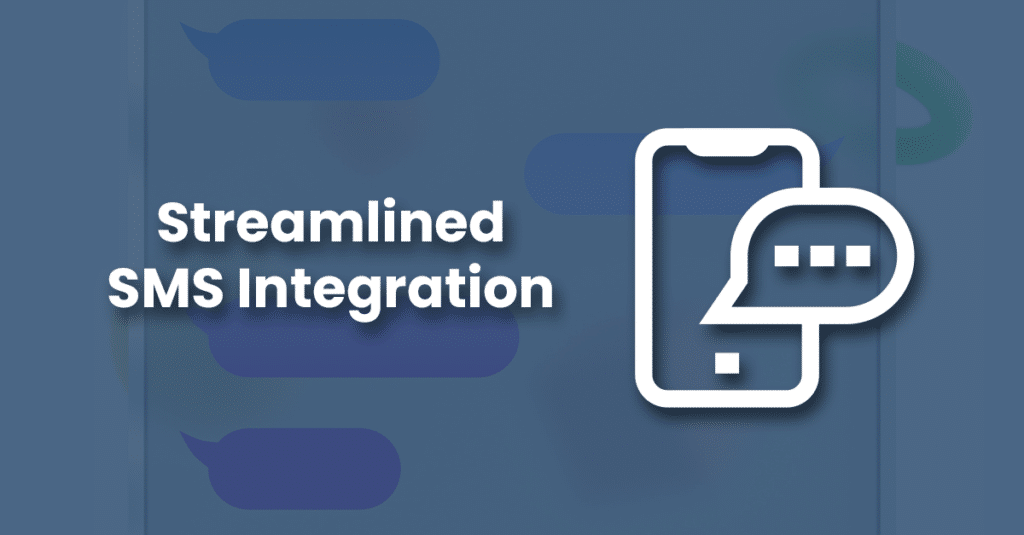Introduction to Storytelling in Modern Marketing
In the realm of modern marketing, the art of storytelling has emerged as a pivotal strategy, especially when it comes to building brand authenticity through storytelling marketing. This approach is not just about selling a product or service; it’s about weaving a narrative that resonates with your audience, creating a deep, emotional connection that transcends the traditional buyer-seller relationship.
Why Storytelling?
Storytelling in marketing isn’t a new concept, but its importance has skyrocketed in recent years. In an era where consumers are bombarded with countless advertisements daily, traditional marketing methods are often tuned out or overlooked. This is where storytelling steps in as a beacon of authenticity. By telling a story, brands can engage customers in a way that feels personal, trustworthy, and genuine.
Building Brand Authenticity
The key to building brand authenticity through storytelling marketing lies in the narrative’s genuineness. Authentic storytelling in marketing means sharing the heart and soul of your brand – its values, its journey, and its commitment to its customers. It’s about being transparent and relatable, creating a narrative that customers can see themselves in.
The Shift to Storytelling
The shift towards storytelling in marketing reflects a broader change in consumer behaviour. Today’s consumers are looking for more than just a product or service; they’re seeking connections, experiences, and brands that align with their values and beliefs. This shift makes storytelling an invaluable tool in building a brand that not only speaks to its audience but also listens and responds to their aspirations and needs.
Building Lasting Connections
Ultimately, the goal of building brand authenticity through storytelling marketing is to establish lasting connections with your audience. These connections are built on trust, emotion, and a sense of shared values. When a brand successfully tells its story, it doesn’t just create customers; it creates advocates – people who believe in the brand and are eager to share its story with others.
The Power of Storytelling in Brand Building
The journey of building brand authenticity through storytelling marketing begins with understanding the inherent power of stories in shaping our perceptions and emotions. Storytelling in brand building isn’t just a marketing strategy; it’s an art form that taps into the human psyche, creating a bond between the brand and its audience.
Historical Perspective: The Evolution of Brand Storytelling
From the age-old tradition of oral storytelling to modern-day digital narratives, the essence of storytelling has always been about connection and communication. In the context of marketing, this evolution has shifted the focus from overt advertising to storytelling that embodies the brand’s identity and values. This historical shift underscores the increasing importance of authenticity and personal connection in brand messaging.
Emotional Resonance: The Heart of Authentic Branding
At the core of building brand authenticity through storytelling marketing is emotional resonance. A compelling story elicits emotions – joy, empathy, inspiration, or even a sense of belonging. When a brand’s story resonates on an emotional level, it transcends the realm of mere transactions; it fosters loyalty and a sense of community among its consumers. This emotional connection is what sets authentic brands apart in a crowded marketplace.
Connecting with the Audience on a Deeper Level
The magic of storytelling in brand building lies in its ability to connect with the audience on a deeper, more personal level. It’s about creating narratives that are not just heard but felt. This involves understanding the audience’s desires, challenges, and aspirations and reflecting these in the brand’s story. In doing so, brands move beyond traditional marketing tactics to foster a genuine relationship with their audience.
Building Trust through Authentic Narratives
Trust is a crucial component in building brand authenticity through storytelling marketing. Authentic storytelling is characterized by honesty and transparency, elements that are essential in building trust with your audience. When a brand shares its true story – including its challenges and victories – it presents itself as relatable and trustworthy, further solidifying its place in the hearts and minds of its audience.
Omnitas Newsletter
Sign up for our monthly newsletter to stay up-to-date on our latest blog articles, videos and events!
Thank you!
You have successfully joined our subscriber list.
Key Elements of Authentic Storytelling in Marketing
To effectively harness the power of storytelling in the pursuit of building brand authenticity, it’s crucial to understand and incorporate key elements that make a story not just compelling, but also genuine and impactful.
Authenticity and Relatability: Crafting Genuine Narratives
The cornerstone of authentic storytelling in marketing is, undoubtedly, authenticity itself. This means creating narratives that are true to the brand’s identity, mission, and values. Authentic stories are relatable; they reflect real-life experiences, challenges, and triumphs that resonate with the audience. A narrative that feels genuine and relatable strengthens the audience’s connection to the brand, fostering a sense of trust and loyalty.
Emotional Engagement: Understanding Your Audience
Emotional engagement is another critical element in building brand authenticity through storytelling marketing. A story that evokes emotions—be it happiness, empathy, or inspiration—creates a memorable experience for the audience. To achieve this, marketers need to have a deep understanding of their audience’s needs, desires, and emotional triggers. This understanding allows for the creation of stories that not only capture attention but also touch hearts and minds.
Consistency Across Channels
Consistency in storytelling across various marketing channels is essential for building a cohesive brand image. Whether it’s social media, blog posts, email campaigns, or traditional advertising, the core message and tone of the brand’s story should be uniform. This consistency helps in reinforcing the brand’s identity and ensures that the audience receives a unified experience, regardless of the platform.
Incorporating Visuals and Multimedia
In today’s digital age, the integration of visuals and multimedia plays a significant role in storytelling. Engaging images, videos, infographics, and interactive elements can enhance the storytelling experience, making it more engaging and memorable. These visual elements should complement the narrative and reinforce the message, adding depth and dimension to the storytelling.
Transparency and Vulnerability
Transparency and vulnerability are powerful tools in building brand authenticity through storytelling marketing. Sharing not just the successes but also the struggles and failures make a brand more human and approachable. This level of openness can foster a stronger, more emotional connection with the audience, as they see a brand that is honest and unafraid to show its true self.
Tools and Techniques for Effective Storytelling in Marketing
Mastering the art of storytelling in marketing requires not only creativity and insight but also the right set of tools and techniques. These resources aid in crafting, organizing, and disseminating stories that resonate with audiences and reinforce brand authenticity.
Techniques for Crafting Compelling Stories
- Narrative Structure: Utilize classic storytelling structures such as the three-act format—setup, confrontation, and resolution—to create a compelling narrative arc.
- Character Development: Introduce relatable characters or brand personas that your audience can connect with. These characters should embody the values and messages of your brand.
- Emotional Storytelling: Focus on creating stories that evoke emotions. Use powerful, emotive language and scenarios that mirror your audience’s experiences or aspirations.
- Incorporating Customer Stories: Leverage testimonials, case studies, and user-generated content. Stories from real customers add credibility and authenticity, showing real-world applications and satisfaction.
Tools for Crafting and Sharing Stories
- Content Management Systems (CMS): Platforms like WordPress or Joomla help in organizing and publishing content efficiently, ensuring consistency across your storytelling efforts.
- Project Management Tools: Tools like monday.com excel in organizing and planning storytelling campaigns. They help in managing timelines, content creation processes, and team collaboration, ensuring a seamless storytelling workflow.
- Graphic Design and Video Editing Software: Utilize tools like Adobe Creative Suite for creating visually engaging elements that complement your stories.
- Social Media Management Tools: monday.com’s broad user possibilities make it perfect for scheduling and managing posts across multiple social media channels, ensuring consistent storytelling across all digital touchpoints.
- Analytics Tools: Utilize Google Analytics and social media insights to track the performance of your stories, understand audience engagement, and refine your storytelling strategies based on data-driven insights.
- Automation and Integration Platforms: Tools, like Make, are invaluable for automating repetitive tasks and integrating various marketing tools, streamlining the storytelling process and allowing more focus on creative aspects.
Implementing Storytelling in Your Marketing Strategy
Integrating storytelling into your marketing strategy is a dynamic process that involves more than just crafting compelling narratives. It’s about aligning these narratives with your brand goals and ensuring they resonate with your target audience.
Defining Your Storytelling Objectives
- Identify Your Core Message: Determine the central message you want your brand story to convey. This should align with your brand values and mission.
- Understand Your Audience: Develop a deep understanding of your audience’s needs, preferences, and pain points. This knowledge is crucial in creating stories that resonate with them.
- Set Clear Objectives: Whether it’s increasing brand awareness, driving sales, or improving customer loyalty, your storytelling efforts should have specific, measurable goals.
Crafting Your Story
- Develop a Content Calendar: Plan your storytelling content in advance. A content calendar helps maintain a consistent narrative flow and ensures regular engagement with your audience.
- Diversify Your Story Formats: Utilize a mix of formats such as blogs, videos, social media posts, and podcasts to keep your storytelling dynamic and accessible across different platforms.
- Incorporate Visual Elements: Enhance your stories with relevant images, infographics, or videos. Visual elements can make stories more engaging and memorable.
Distributing Your Story
- Leverage Multiple Channels: Distribute your stories across various channels where your audience is most active. This includes social media, email newsletters, your website, and even offline channels.
- Engage and Interact: Encourage audience interaction with your stories. Engage with comments, shares, and feedback to create a two-way communication channel.
Measuring and Refining
- Monitor Performance: Use analytics tools to track the performance of your storytelling efforts. Look at engagement rates, website traffic, and conversion metrics.
- Gather Feedback: Listen to your audience’s feedback and use it to refine your storytelling approach. This helps in staying relevant and authentic.
- Iterate and Improve: Continuously refine your storytelling based on performance data and audience feedback. Experiment with different story angles, formats, and distribution channels to see what resonates best with your audience.

Best Practices and Common Pitfalls in Storytelling Marketing
To effectively leverage storytelling in your marketing strategy and enhance brand authenticity, it’s essential to follow best practices while being aware of common pitfalls.
Best Practices in Storytelling Marketing
- Be Consistent in Your Messaging: Ensure that your storytelling is consistent across all platforms and channels. Inconsistent messaging can confuse your audience and dilute your brand’s authenticity.
- Focus on Quality Over Quantity: It’s better to share fewer, well-crafted stories than to bombard your audience with content that lacks depth and emotional resonance.
- Show, Don’t Just Tell: Use storytelling to show the impact of your brand in real-life scenarios. This approach is more effective than simply stating facts or features.
- Involve Your Audience: Encourage user-generated content and involve your audience in your storytelling. This can create a more engaging and relatable narrative.
- Stay True to Your Brand Voice: Every story you tell should reflect your brand’s unique voice and personality. Authenticity in storytelling comes from being true to who you are as a brand.
Common Pitfalls to Avoid
- Avoid Over-Commercialization: While the ultimate goal may be to drive sales or conversions, overtly commercial messages can detract from the authenticity of your story.
- Don’t Neglect Your Audience’s Needs: Failing to align your stories with your audience’s interests and needs can lead to disengagement. Always keep your audience at the center of your storytelling.
- Steer Clear of Inconsistency: Inconsistent storytelling can confuse your audience and harm your brand’s credibility. Ensure your stories align with your brand’s values and image.
- Avoid Overcomplicating the Story: Simplicity often works best in storytelling. Overly complex narratives can lose the audience’s interest or dilute the key message.
- Don’t Ignore Feedback: Neglecting audience feedback can be a missed opportunity for improvement. Pay attention to what your audience is saying about your stories.
Future of Storytelling in Marketing
As we look to the future, storytelling in marketing is poised to evolve in exciting ways. Staying ahead of these trends is crucial for brands looking to maintain authenticity and connect deeply with their audience. Below we’ve listed some trends we believe will have an impact on storytelling in marketing in the upcoming years.
Emerging Trends in Storytelling
- Interactive and Immersive Storytelling: With advancements in technology, expect to see more interactive and immersive storytelling experiences, such as augmented reality (AR) and virtual reality (VR). These technologies offer new ways for brands to engage audiences in their narratives.
- Personalization at Scale: Leveraging data and AI, brands will be able to personalize stories for individual consumers on a large scale, enhancing relevance and engagement.
- Social Responsibility and Ethical Storytelling: Consumers increasingly expect brands to be socially responsible. Ethical storytelling that highlights a brand’s commitment to social and environmental issues will become more prominent.
- Leveraging User-Generated Content: Encouraging and incorporating user-generated content in brand stories will continue to grow, as it adds authenticity and fosters community among consumers.
Adapting to Changing Consumer Expectations
- Emphasis on Authenticity: The demand for genuine, unfiltered stories will continue to rise. Brands will need to focus more on authenticity and less on polished, overly-produced content.
- Greater Audience Participation: The future of storytelling will see more co-creation with audiences, where consumers are not just passive recipients but active participants in the storytelling process.
- Continued Integration of Social Media: Social media platforms will remain crucial for storytelling, with evolving features like Stories, Live videos, and Reels offering new ways to engage with audiences.
Staying Ahead of the Curve
- Continuous Learning and Adaptation: Brands must stay informed about the latest trends and technologies in storytelling and be willing to adapt their strategies accordingly.
- Experimentation: Experimenting with new formats, channels, and storytelling techniques will be key to discovering what resonates best with evolving audiences.
- Investment in Analytics and Insights: Investing in analytics tools and gathering insights will become increasingly important to understand the impact of storytelling efforts and to tailor future narratives.
Conclusion: The Lasting Impact of Authentic Storytelling
As we have explored throughout this article, building brand authenticity through storytelling marketing is not just a strategy, but a powerful tool that shapes the way consumers perceive and interact with brands. Authentic storytelling goes beyond mere marketing tactics; it fosters genuine connections, builds trust, and creates a community of loyal customers and brand advocates.
The Essence of Authentic Storytelling
Authentic storytelling in marketing is about honesty, relatability, and emotional resonance. It’s about sharing the true narrative of a brand – its journey, its values, and its commitment to its customers. When a brand successfully tells its story in an authentic manner, it not only captivates its audience but also engraves itself in their hearts and minds.
A Future Guided by Narratives
The future of marketing is undeniably intertwined with the art of storytelling. As consumer behavior continues to evolve, so too will the methods and mediums of storytelling. The brands that will thrive are those that can adapt to these changes while staying true to their core narrative and values.
Building a Legacy through Stories
In conclusion, the pursuit of building brand authenticity through storytelling marketing is not just about short-term gains; it’s about creating a legacy. Authentic stories are timeless and can carry a brand’s legacy forward, resonating with generations of consumers.
If you’ve enjoyed this exploration into the power of storytelling in marketing and its impact on brand authenticity, we invite you to stay connected. Subscribe to our monthly newsletter below for more insights, tips, and trends to help you navigate the ever-evolving marketing landscape.














